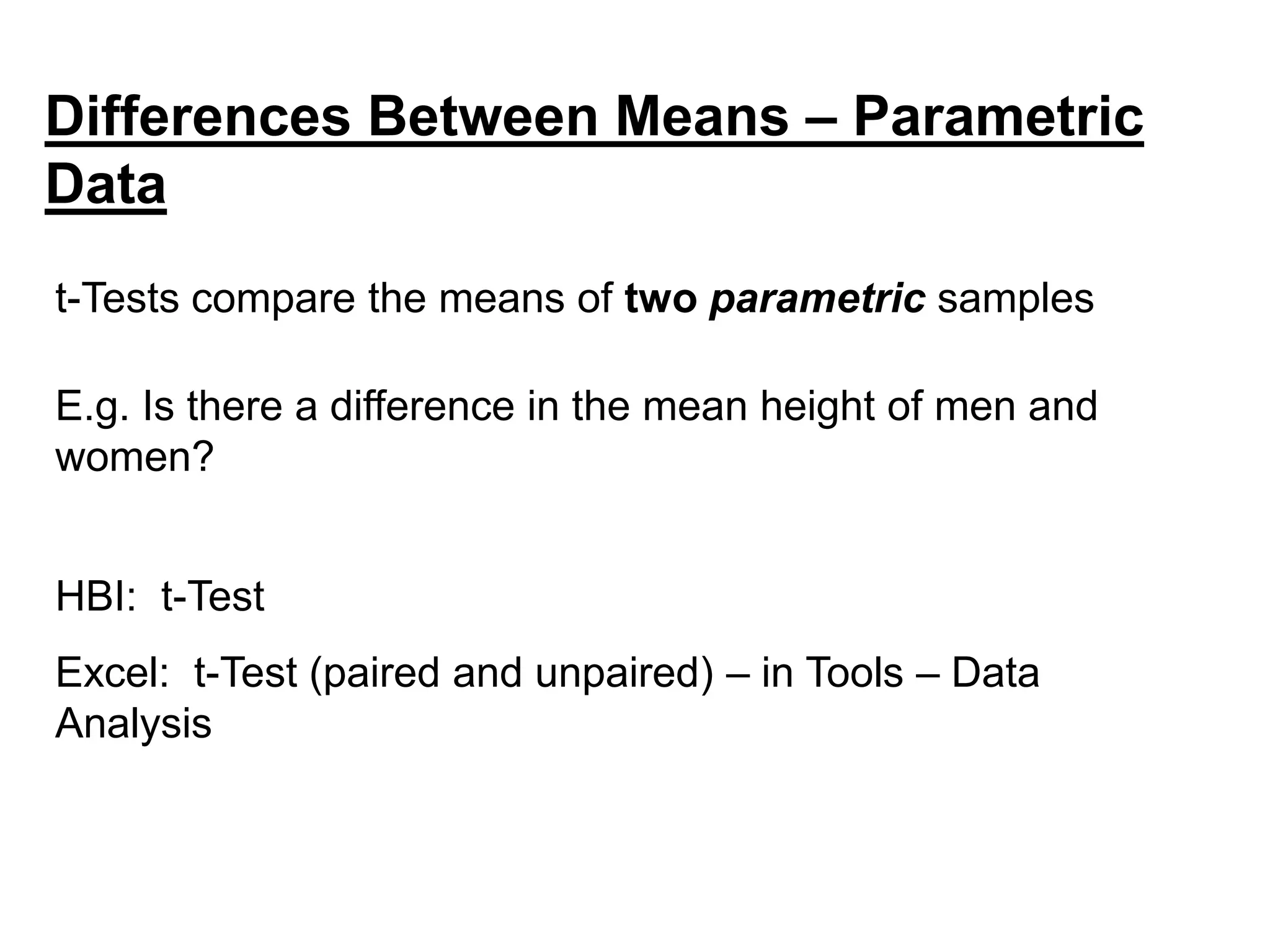Statistical tests can be used to analyze data in two main ways: descriptive statistics provide an overview of data attributes, while inferential statistics assess how well data support hypotheses and generalizability. There are parametric tests that assume normal distributions and continuous scales, and non-parametric tests for other distributions or scales. Key questions are whether tests examine relatedness between variables or differences between samples/populations. Tests for differences include comparing means (t-tests for two samples, ANOVA for more), distributions (chi-square tests), or variances (F-tests) between parametric or non-parametric data.


































